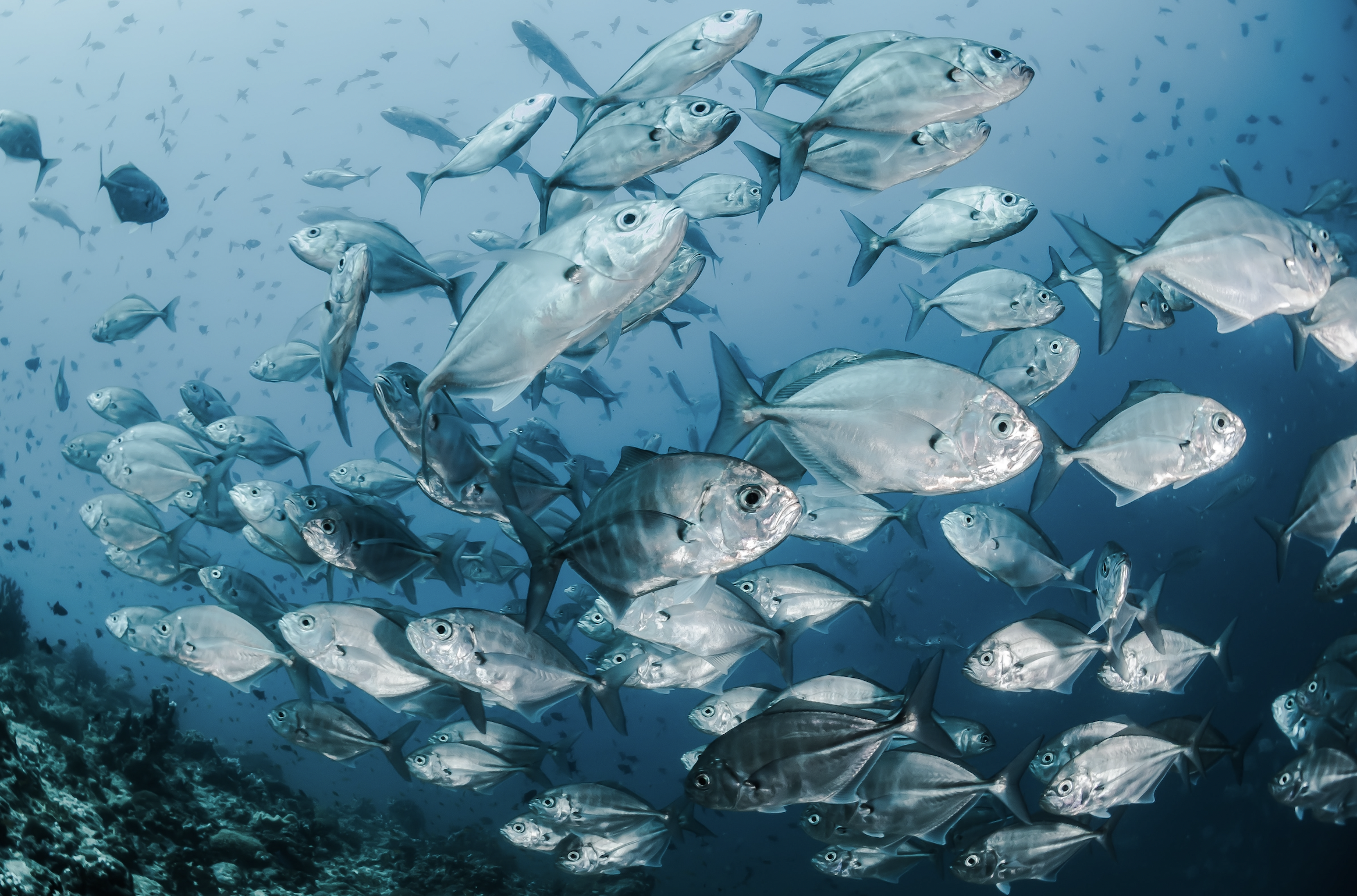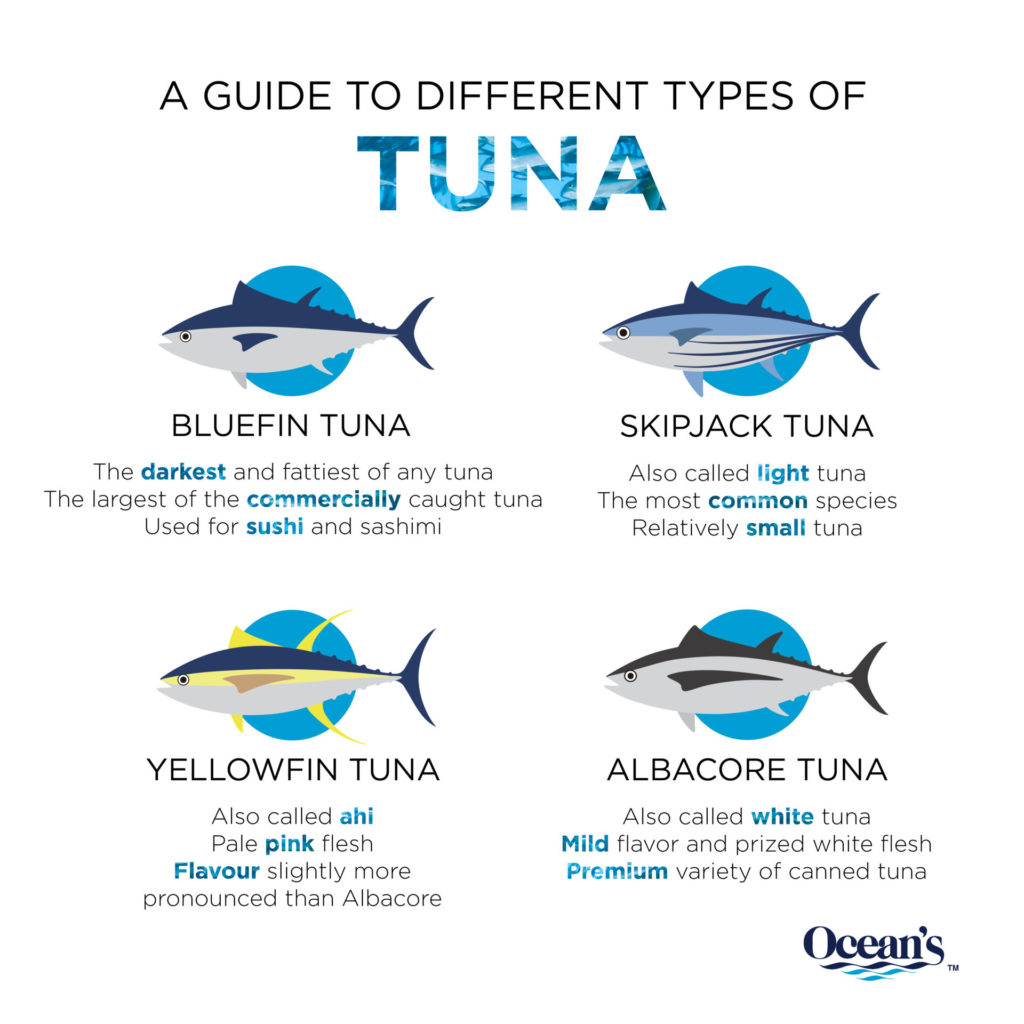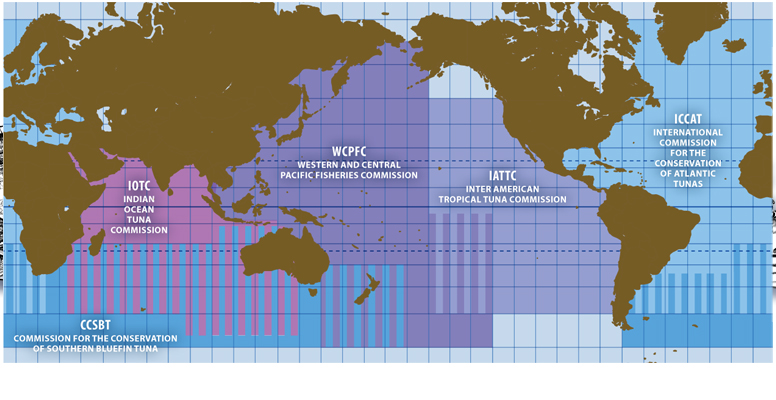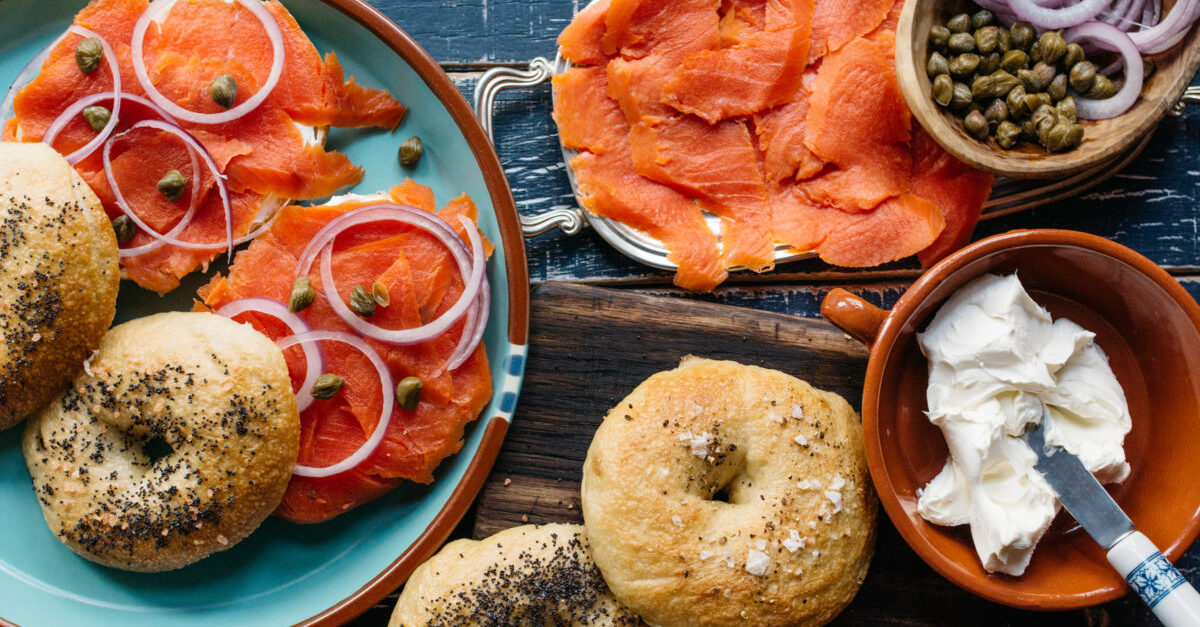
Talking Tuna: How they’re caught, how stocks are managed, and what species to look for
Tuna is one of the most eaten fish in the world, but is also one of the most misunderstood fish in the world – especially when it comes to understanding whether or not tuna is sustainable.
There are actually five main species of tuna that we eat: skipjack, albacore, yellowfin, bluefin, and bigeye. When we say “tuna” we could actually be referring to any one of these five fish – hence where the confusion comes in!

Skipjack – Skipjack is the most abundant tuna in the ocean, making up 60% of the global tuna catch. Skipjack can grow up to one meter and weight up to 19 kg. If you’re in Europe or Asia, skipjack is the tuna species most likely found in tins, like these one’s from Oceans.
Albacore – Albacore can weigh up to 36 kg and reach over one meter in length. Small albacore are caught at the surface in cool water outside the tropics, while larger albacore are caught mainly at lower latitudes using longline gear. Most of the catch is used for canned tuna.
Yellowfin – Yellowfin can reach almost 2 meters in length and weigh up to 181 kg. Small yellowfin are caught near the surface by purse seine and pole-and-line gear, while older fish are caught in deeper waters using longline gear. Small yellowfin are used mainly for canning while high quality, larger yellowfin are often shipped fresh to Asian markets.
Bluefin – Bluefin can live over 40 years, weigh over 600 kg, and grow to over three meters. Bluefin tuna are slow to mature and some may not reproduce until they are 15 years old. Bluefin are caught primarily by purse seines, as well as by longlines, harpoons, and pole-and-line gear.
Bigeye – Bigeye can reach 1.7 meters, weigh up to 180 kg, and can live to around 9 years. Small bigeye are caught on the surface by purse seine vessels fishing on FADs where immature bigeye tend to congregate. Larger and older fish are caught in deeper waters using longline gear. Small bigeye are used mainly for canning while high quality, larger bigeye are especially valuable as fresh fish in the Japanese market.
Learn more about fishing gear types here
Tuna are a highly nomadic species and is found all throughout the world’s oceans. Tuna can be found across 325 million square kilometers or 91% of the world’s ocean surface.

The world’s tuna fisheries are managed by regional fisheries management organizations (RFMOs). An RFMO is an international body made up of countries that share a practical and/or financial interest in managing and conserving fish stocks in a particular region.
How sustainable is tuna?
Two-thirds of all types of tuna are fished at biologically sustainable levels, a rise of 10% in just two years, according to the UN Food and Agriculture Organization’s (FAO) state of the world’s fisheries report. This improvement is due to intensive science-based fisheries management.
Adjustments to fishing gear – such as placing the gillnets two metres deeper – as well as training in how to protect threatened species have helped save marine mammals, mainly dolphins and sea turtles. Bycatch reduction was also made possible thanks to an uptake in non-entangling and ocean-friendly fish aggregating devices.
If your can of tuna is carrying the blue MSC label, then you can feel confident your tuna is coming from a sustainable fishery! MSC labelled tuna comes from a fishery that has been independently assessed to the MSC Fisheries Standard and met criteria related to fisheries management, stock levels, and environmental impact.
While some species, like bluefin tuna, have struggled, today, 50% of the world’s tuna is engaged in the MSC program.
Of the 5.8 million tons of tuna caught, 28.9% is from a fishery that is already MSC certified and a fifth (20.4%) is currently being tested to the MSC Standard. Another fifth of the global tuna catch is from fisheries working on improvements required to seek certification (19.54% in a fisheries improvement project).
The science-based MSC certification scheme checks tuna stocks are healthy and are being managed well, and that the fishery has minimized its impact on the ecosystem. That includes measures to minimize interactions with other marine species, such as dolphins, turtles and seabirds.
That’s why Ocean’s chunk light tuna is my go to tinned tuna brand. You can walk into any grocery store and see shelves FULL of tinned tuna, but not all of them will be certified sustainable. Knowing the importance of tuna to the marine ecosystem as one of the largest pelagic predators in the ocean, I want to make sure my tuna choices are helping these stocks rebuild and remain plentiful in the ocean. Choosing Ocean’s sustainable, traceable tuna helps me do exactly that.
Tuna Bento Box 3 Ways
Tuna bento boxes are perfect for a picnic lunch or a quick outdoor lunch break. Here are three ideas for a quick
High Protein Box
- Tuna salad using Ocean’s chunk light tuna
- Almonds
- Hard boiled eggs
Mediterranean Box
- Tuna salad using Ocean’s chunk light tuna
- Sliced cucumber
- Olives
- Fresh baguette
- Grapes
Adult Lunchable Box
- Tuna salad using Ocean’s chunk light tuna
- Your favourite crackers
- Sliced strawberries



